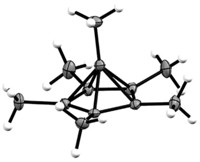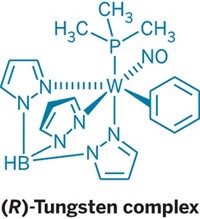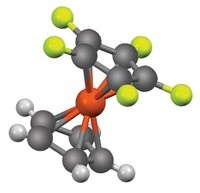Advertisement
Grab your lab coat. Let's get started
Welcome!
Welcome!
Create an account below to get 6 C&EN articles per month, receive newsletters and more - all free.
It seems this is your first time logging in online. Please enter the following information to continue.
As an ACS member you automatically get access to this site. All we need is few more details to create your reading experience.
Not you? Sign in with a different account.
Not you? Sign in with a different account.
ERROR 1
ERROR 1
ERROR 2
ERROR 2
ERROR 2
ERROR 2
ERROR 2
Password and Confirm password must match.
If you have an ACS member number, please enter it here so we can link this account to your membership. (optional)
ERROR 2
ACS values your privacy. By submitting your information, you are gaining access to C&EN and subscribing to our weekly newsletter. We use the information you provide to make your reading experience better, and we will never sell your data to third party members.
Synthesis
Hexafluorocyclohexane Makes History
Fluorine Chemistry: Synthesis yields first confirmed stereoisomer of elusive molecule
by Stephen K. Ritter
September 21, 2012
| A version of this story appeared in
Volume 90, Issue 39
Chemists have finally found a way to make a stereoisomer of 1,2,3,4,5,6-hexafluorocyclohexane, a molecule with one fluorine and one hydrogen on each carbon of a six-membered ring. Their route to the long-sought molecule could open the way to the design of new pharmaceuticals and materials, including selectively fluorinated sugars.
To make the molecule, David O’Hagan, Alastair J. Durie, and coworkers of the University of St. Andrews, in Scotland, devised a five-step strategy that combines known fluorination, oxidation, and deoxyfluorination steps. Starting with benzene, the reaction selectively places one fluorine on each carbon atom in the ring, ending up with a single isomer out of the nine possible stereoisomers of 1,2,3,4,5,6-hexafluorocyclohexane. The team characterized the white crystalline solid by multinuclear magnetic resonance spectroscopy and X-ray crystallography (Angew. Chem. Int. Ed., DOI: 10.1002/anie201205577).
Benzene halogenations were among the first reactions carried out by modern chemists, O’Hagan notes. In 1825, Englishman Michael Faraday reported the preparation and isolation of hexachlorocyclohexane isomers from chlorine gas and benzene. In the 1940s, hexachlorocyclohexane was first marketed as lindane, which became widely used as an insecticide as well as a treatment for lice and scabies. In 1835, German Eilhard Mitscherlich reported the hexabromocyclohexane analog.
An iodo version of the molecule still hasn’t been reported, O’Hagan says. And although Englishman J. Colin Tatlow and coworkers reported in 1969 that they might have made a fluoro version as a minor by-product, they were not able to confirm the structure of the compound, he says.
“This novel class of polyfluorinated molecules, situated halfway between hydrocarbons and perfluorocarbons, remains relatively unexplored,” comments Graham Sandford of the University of Durham, in England. “The synthetic strategies developed by O’Hagan’s group open up further possibilities to probe the stereoelectronic effects of fluorine atoms on the molecular structure and function of cyclohexanes. Given the always-growing number of applications for perfluorocarbons in everyday use as nonstick coatings, water-repelling fabrics, and ionic polymer membranes, these new partially fluorinated hydrocarbons may offer similarly exciting applications.”






Join the conversation
Contact the reporter
Submit a Letter to the Editor for publication
Engage with us on Twitter